🔥 1. Always Challenge Yourself: From a young age, Branson loved to break the rules, question authority, and keep trying despite failure.
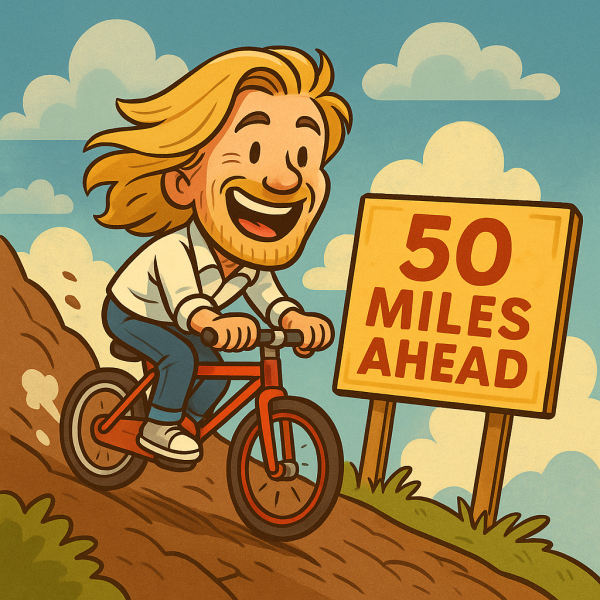
“Losing My Virginity” opens with Richard Branson stepping into a massive hot air balloon over the Moroccan desert. It’s January 1997. He says tearful goodbyes to his family and writes a farewell letter to his kids—just in case he doesn’t make it back.
His goal? Become the first person to fly around the world by balloon.
Almost immediately, things go wrong. They drift over a military base in Algeria and risk being shot down or jailed. Branson spends two hours midair negotiating with British officials.
Then the balloon starts falling. They throw out everything—fuel, supplies, even an envelope of cash—to avoid crashing into the mountains. They barely manage an emergency landing in the Sahara Desert, in a country mid–civil war. Soldiers and helicopters surround them.
Branson thought he was going to die. In that moment, he swore he’d never do something like this again. But the moment he hit the ground safely, he already wanted to try again.
Why does a billionaire with a happy family keep risking his life? Because he lives for the challenge.
Raised to Be Fearless
Richard Branson is the founder of the Virgin brand, which includes Virgin Records, Virgin Atlantic, and even Virgin Galactic—the company sending people to space. He’s known for doing business boldly and playfully, often by breaking the rules. And he’s just as adventurous in life as he is in business.
That fearless attitude started early. His mom once packed him a lunch and told him to bike 50 miles alone to visit family. He still doesn’t know how he made it.
Another time, his Auntie Joyce promised him 10 shillings if he learned to swim by summer’s end. After weeks of failing, Branson saw a river during a drive home, begged to stop, jumped in, and finally figured it out. Soaking wet, he got back in the car a winner.
His home was full of love and mutual respect. His mom had been a dancer, glider pilot, and flight attendant. His dad, a war veteran and lawyer, proposed to her in the middle of a motorcycle ride. They treated their kids like equals, encouraged curiosity, and tolerated mischief.
From Getting Expelled to Starting a Magazine
School didn’t go well for Branson. He had undiagnosed dyslexia and poor eyesight, and got into constant trouble. He was great at sports—until a knee injury ended that. He even got expelled from a cramming school for sneaking into the headmaster’s daughter’s room. His parents weren’t mad—just amused.
But Branson was always drawn to business. With his best friend Nik Powell, he tried odd money-making schemes: like planting 400 Christmas trees which rabbits eventually ate, and they tried breeding birds but his parents got tired of cleaning bird poop. The plans failed, but he discovered he actually enjoyed math when it was tied to concrete business plans.
At his next school, Stowe, Branson met his first girlfriend, a “Dutch revolutionary” who camped in the woods outside the school, and he would sneak out at night to visit her.
Branson would often hide in the library, writing down erotic fantasies. There he met a new friend Jonathan Holland-Gems. The two of them hated dumb school rules and loved talking big ideas. They started writing complaints to the headmaster, arguing that many of the rules were unfair, like kids being forced to go to sports matches and weekly mass.
He recommended they publish their complaints in the school magazine. They had a better idea: to launch their own independent magazine, called Student. That was Branson’s first real business venture.
- The book opens with a near-death balloon crash, showing Branson’s love for extreme challenges. This love of challenge started early, like when his mom told him to bike 50 miles a kid.
- His parents raised him to be brave, independent, and curious. He often got into trouble at school, even getting expelled once. He failed at a couple of money making schemes—growing Christmas trees and breeding birds.
📞 2. Fake It at First: Branson launched his magazine “Student” with zero experience by cold-calling hundreds of companies, famous people, and school officials.
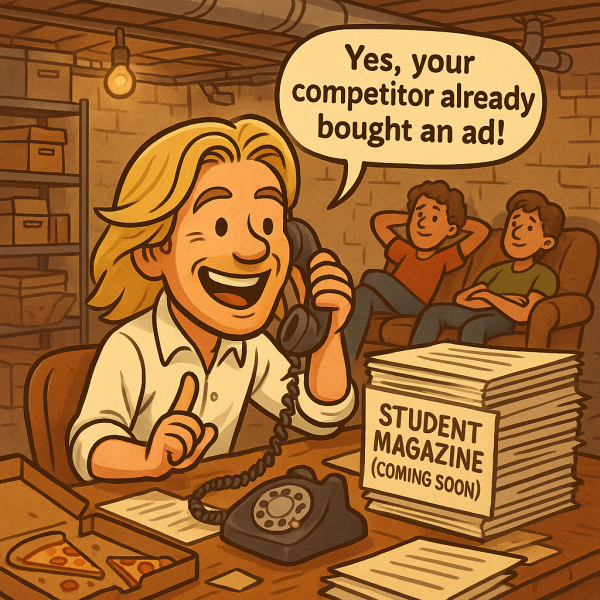
Richard Branson and his friend Johnny had a bold idea: a rebellious magazine run by students, for students. The only problem? It didn’t exist yet—and they had no money.
Learning Sales the Hard Way
To fund the first issue of Student magazine, Branson cold-called over 300 companies. He also wrote countless letters to school officials and government agencies. After hundreds of rejections, he finally got nine companies to pay $250 for full-page ads—including The Sunday Times, The Economist, and Lloyds Bank. That was enough to print 30,000 copies in January 1968.
Imagine how ridiculous the whole situation was. Branson was just a 15-year-old kid, calling massive companies like Coca-Cola from a public phone booth. Luckily, with his deep voice, people assumed he was an adult. He learned to avoid paying for phone calls by tricking the operator—pretending his call had been disconnected.
At first, no one wanted to pay for ads in a magazine that didn’t exist. But Branson quickly learned a few sales techniques to help land advertisers.
One of his favorite tricks: he’d tell a company that their rival had already bought ad space. This made them eager to buy, because no one wanted to be left behind.
Early Chaos
At the same time, to make the magazine feel legitimate, they also chased big-name contributors. Their first big breakthrough came from cartoonist Gerald Scarfe, who agreed to give them a cartoon and interview.
Then came interviews with Mick Jagger and John Lennon, who were almost gods to students. Lennon once offered an original song, but when he couldn’t follow through, he gave Branson an audio recording of his unborn child’s heartbeat, who had died in a miscarriage. They never published the audio.
The team worked out of Johnny’s parents’ basement. It was total chaos—stacks of paper, Bob Dylan blasting, teenagers on beanbags smoking weed, taking LSD, and talking politics and free love. Richard and Johnny would often go out to nightclubs, bring girls home for “coffee,” and convince them to help with the magazine the next day.
After one fling led to an unexpected pregnancy, Branson and the girl, Debbie, went through the confusing and difficult process of getting an abortion. That experience inspired him to create the Student Advisory Centre—a phone line to help young people with pregnancy and sexual health. Branson often stayed up late taking calls and providing referrals to helpful doctors.
But when they advertised the center in Student magazine and mentioned the words “venereal disease,” they were charged for using obscene language due to a very old law. Branson could’ve faced two years in prison, but the public generally felt the law was absurd, and he only received a symbolic £7 fine.
Taking Control of the Business
At first, Johnny handled the creative side while Branson focused on the business side: he was always on the phone getting advertisers and paying the bills.
When Johnny returned to school, the team moved from his parent’s basement to a rented house—until officials kicked them out for running a business in a residential home. Then they moved into the crypt of a nearby church—working between the tombs.
Branson brought in his friend Nik Powell to manage the finances. Up until then, money had literally been kept in a tin that anyone could dip into for snacks or weed. Nik was numbers-oriented and frugal, so he brought structure and discipline, helping Student grow into a real operation.
But in 1970, Branson discovered a memo: Nik wanted to turn Student into a cooperative and remove Branson as editor and publisher. Branson felt betrayed. He had started the magazine and felt he should remain in control. He told Nik to leave. They remained friends, but Branson made it clear: Student was his.
- Branson sold thousands in ads before the magazine existed—cold-calling hundreds of companies, faking confidence, and name-dropping competitors to close deals.
- The early magazine was pure chaos—run from basements with friends, music, and no structure—until they gradually brought order to the finances.
- After a personal experience with an unplanned pregnancy, Branson launched the Student Advisory Centre. It nearly got him jailed, but showed his drive to combine business with social impact.
Phil Knight is the founder of Nike, the most valuable sportswear brand in the world. Believe it or not, Nike began as a college paper. In that paper, Phil argued that Japanese shoes could soon become more popular in America than European ones, just as Japanese cameras had recently replaced German ones. He became obsessed with this idea, calling it his “crazy idea.”
After graduation, he took a backpacking trip around the world and made a stop in Japan, bringing a suit just in case. There, he talked his way into a meeting with Onitsuka, a Japanese shoe company. Sitting across from a room full of seasoned executives, this fresh-out-of-college kid pitched his paper—and asked to become their U.S. distributor.
The whole time, he was faking it. They asked him what was his company’s name in America. Of course, there was no company yet, so he had to come up with a name on the spot. He blurted out “Blue Ribbon”, thinking of the blue ribbons back he had won running. But he won the contract, “Blue Ribbon” eventually became “Nike,” and the rest is history.
🎵 3. Pivot Fast: A crisis forced Branson to shift from the magazine to music stores. He wasn’t afraid to change direction, experiment, and learn from mistakes.

Running a magazine funded by ads was tough. Even during the early days of Student, Branson was already thinking about other ways to make money—like student conferences or a student travel agency. His vision was to create a whole brand for young people.
Launching the Mail-Order Business
Branson noticed one thing right away: all the young people he knew were spending a lot of money buying music records. That gave him the idea to start selling records by mail through his magazine—cheaper than in stores. The first ad brought in a flood of orders and cash.
They named this new venture Virgin, because they were new to business.
With orders piling up fast, Branson needed someone he could trust to organize the finances, so he brought back his friend Nik Powell. They split the business 60/40, paid everyone £20 a week, and let the magazine quietly die while Virgin Records took off.
An Opportunity Created by Crisis
Then disaster hit: in 1971, the postal workers went on strike. No mail meant no orders, and Virgin was about to run out of money.
To survive, Branson needed to open a physical record store. He believed that most music shops were boring and overpriced. Branson wanted Virgin to feel totally different: laid-back, youthful, and fun. A place where young people like him could hang out, listen to music, and feel connected to the culture.
He and Nik looked for a cheap store location on a busy street. They literally counted the number of people passing by different spots in the city. They found a shoe store with a vacant second floor and struck a deal with the owner: they couldn’t pay rent, but they promised to bring in plenty of young customers who might buy shoes too.
Within a week, they built shelves, set up couches, added beanbags, and stocked the space with music records. They offered customers headphones to listen to music in-store and free magazines and coffee. The handed out flyers advertising low prices. On opening day, the line stretched down the block.
Hard Lessons and Debt
The store was a hit—but it wasn’t profitable. Small margins left them £15,000 in debt.
Then Branson spotted a risky shortcut. While delivering records to Belgium, customs wouldn’t let him leave due to missing papers—but the records were already stamped for export. On the way back, he realized if he sold them in the UK, he could keep the tax money as profit.
Tempted by fast cash, he did just that—three times. Then he got an anonymous tip: customs was onto him. (Why did someone tip him off? They had been helped years earlier by Branson’s Student Advisory Centre.)
That night, Branson and his team scrambled to move records out of their warehouse before it was raided. It didn’t work. Customs also searched the store and found the records. Branson was arrested and thrown into a grim prison cell.
The Wake-Up Call
Jail changed everything. Branson said it was the first time he’d truly lost his freedom—and he vowed never to risk his freedom or reputation again.
He avoided a criminal record by agreeing to pay £60,000 over three years. If he couldn’t pay, then he’d be sent back to prison. He’s never felt stronger motivation in his life. He became obsessed with making Virgin profitable—legally and quickly.
They expanded fast, picking up smart strategies that increased the success rate of their shops:
- Picked cheaper locations at the less expensive end of busy shopping streets.
- Negotiated 3 months rent-free to test each store location before committing.
They aimed to open one new location every month. Within a year, they had 14 stores. Virgin was no longer a fun project run by school kids—it was a serious business.
- Branson saw where the money was being spent and pivoted from publishing a magazine to selling music records. A postal strike forced them to pivot again, from mail-order to physical stores.
- He learned the hard way that revenue doesn’t equal profit—and that shortcuts can come with major consequences. A night in jail became his life’s turning point, giving him the motivation to build a smarter, faster, and legal business.
Ray Kroc is the man who turned McDonald’s from a single California burger restaurant into a global empire. What most people don’t know? He didn’t start franchising it until he was 52!
Kroc’s life was full of sharp pivots. He started as a paper cup salesman, at a time when most restaurants only offered paper cups. Then switched careers at 35 to sell milkshake machines—just as milkshakes were booming after alcohol Prohibition. When one restaurant ordered an unusually large number of machines, Kroc went to check it out.
That’s when he discovered the original McDonald’s. Their fast, assembly-line burger system blew his mind. Right there, he pitched the idea of franchising—and the rest is fast food history.
🎤 4. Build a Distinct Brand: Virgin Music succeeded by standing for something—great taste, artist freedom, and a rebellious edge.
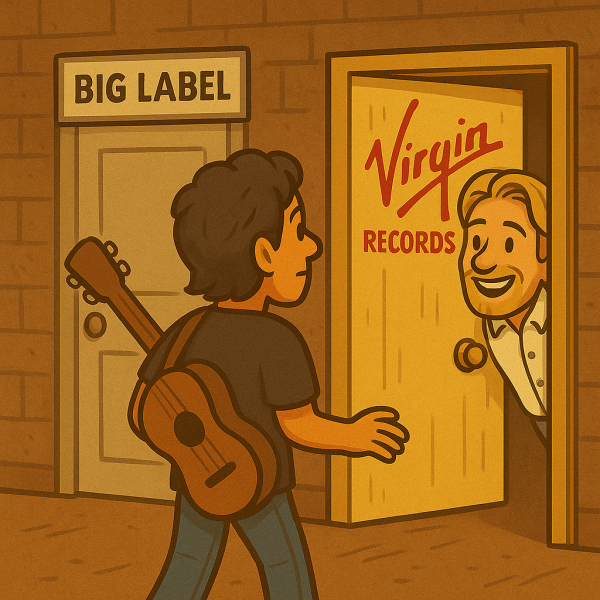
Now let’s see how Virgin went from being just a chain of small music stores, into a hit record label. Branson knew the real money was in owning the music, not just selling it. Launching a record label was riskier, but it’s what ultimately made him his first fortune…
Simon Draper Shaped Virgin’s Brand
One of the smartest hires Branson ever made was his cousin, Simon Draper. Fresh off the plane from South Africa, Simon impressed Branson with his deep knowledge of music. Branson immediately made him Virgin’s record buyer.
Simon’s sharp taste defined Virgin’s brand identity. He only stocked records he believed in and refused to carry anything he thought was uncool. This gave Virgin stores a distinct identity that made young people flock to them.
From Selling Music to Publishing It
Branson realized the big money wasn’t in selling records—it was in publishing them. So he decided to start his own label.
Here, he also saw a gap in the market. At the time, recording studios were cold, uncomfortable places that forced artists to follow a rigid schedule. So Branson imagined a studio that was the exact opposite: comfortable, sprawling—a place where the artist could spend weeks to perfect their album.
He bought a 15-room countryside mansion called The Manor, which he turned into a relaxed, high-end studio for Virgin music artists. He funded it with a mortgage, family support, and a £7,500 loan from his Aunt Joyce.
Simon would run the label and own 20%. His keen taste in music helped them spot rising talent before anyone else. And Branson believed the promise of creative freedom would attract talent—and it did.
During this time, Branson moved into a houseboat after a brief fling with a woman named Mundy. The relationship didn’t last, but he stayed on the boat and loved the lifestyle. He later met and married Kristen, an American dating a musician at The Manor. They had a big wedding in 1972, with Branson’s parents gifting them a gray Bentley with red leather seats. The marriage ended a few years later due to ongoing problems.
Virgin’s First Hit: Tubular Bells
The first artist that Virgin Records signed was Mike Oldfield. His music was instrumental and esoteric. He was nothing like the mainstream, so no other record companies wanted him.
Virgin didn’t even have proper contracts. Branson borrowed a contract from a music artist friend who had signed with Island records. They just swapped in their names.
In 1973, Mike Oldfield’s first album, Tubular Bells, was published. It was highly unconventional, but also a masterpiece. He spend a summer recording it at The Manor, playing 20 instruments himself over hundreds of takes.
Early reviews of the album were glowing, but sales were slow. Branson knew people would love the album if they could just hear it once. So he convinced a radio host, John Peel, to play the entire album on air.
That changed everything. Tubular Bells hit #1 in the charts and eventually sold over 13 million copies.
Branson arranged a live concert to promote it, but Oldfield refused to perform—until Branson bribed him with his prized Bentley. The show was a success, though Oldfield soon vanished into a cabin and avoided the spotlight. Still, his albums continued selling, and he essentially carried Virgin Records for years.
Rebranding with Punk
After Tubular Bells, Virgin struggled to land another star. Their other artists had weak sales. Branson tried hard to sign big bands like Pink Floyd, but the problem was Virgin was seen as a second-tier “hippie” brand.
To change that, Branson took a bold risk: he signed the Sex Pistols—a punk band already dropped by two labels for swearing on TV and mocking the Queen.
In 1977, Virgin released their first album Never Mind the Bollocks, Here’s the Sex Pistols. It was a massive hit—and a scandal. Police claimed the title broke the Indecent Advertising Act. In court, Virgin’s lawyers argued “bollocks” originally meant “priest,” not something vulgar. They won.
The Sex Pistols gave Virgin a new edge. They were the label’s second major hit—even though the band soon broke up.
- Simon Draper helped shape Virgin’s “cool” identity by curating the right music.
- Virgin Records gave artists creative freedom in a large laid-back studio called The Manor—an approach that attracted unique talent.
- Tubular Bells proved that betting on unknown artists can pay off. A few years later, signing the Sex Pistols helped rebrand Virgin as bold, rebellious, and culturally relevant.
Jeff Bezos built Amazon into the world’s biggest online store by making smart, strategic bets—just like Branson did with music artists. Bezos started with only selling books because they were the perfect product to test how to sell millions of different items online. From there, he gradually expanded—first into CDs and DVDs, then toys, then everything.
📉 5. Expand During Crisis: When everything was falling apart because of a recession, Branson bet on growth—and it saved the company.
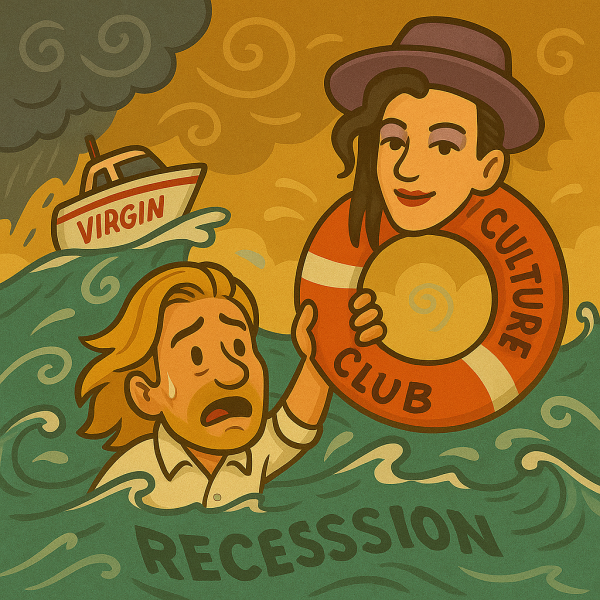
In 1976, Branson met Joan, and they quickly fell in love. Unfortunately, she was already married, to a musician recording at The Manor. They started secretly seeing each other, and eventually, she left her marriage and moved into Branson’s houseboat.
Buying Necker Island
While on vacation, the couple visited the Virgin Islands—not the inspiration for the brand name, just a happy coincidence. Branson had heard you could get free villa stays and helicopter rides around the islands if you pretended to be wealthy and looking to buy a private island.
He did just that and fell in love with Necker Island, though the £3 million price tag was way out of his reach. He offered just £150,000, which got them kicked off the tour and out of the villa. But later, he contacted the owner directly and struck a deal to buy the island for £180,000.
On their way home, their flight to Puerto Rico was canceled. Thinking fast, Branson chartered a plane for $2,000, and sold seats to fellow stuck passengers for $39 each to cover the cost. This was a hint at his future, the first unofficial flight of Virgin Airways.
The Company Starts to Sink
By 1978, Virgin was making £500,000 profit on £10 million in sales. Then a recession hit. Record sales were cut in half—something that had never happened before. Virgin stores started losing money fast.
It seemed like none of their recent business moves had worked. Virgin was still dependent on Mike Oldfield. Branson’s international expansions into the US, France, and Germany had failed to bring major profits. They laid off staff, remortgaged The Manor, and started slashing costs wherever they could.
Worse, the leadership team was divided. Nik Powell and Ken Berry wanted to play it safe: cut costs, drop artists, and focus on Mike Oldfield. But Richard Branson and Simon Draper wanted to push forward—they believed the only way out of this crisis was to keep signing new talent so they could land the next big artist.
The tension reached a breaking point when Branson took an opportunity to buy a group of nightclubs, adding £1 million to their debt. Nik quit. Branson bought out his 40% stake, taking on even more debt.
That year, Virgin lost £1 million.
Finding Boy George
Despite being in a financial black hole, Branson stuck to his instincts: expand out of crisis. And slowly, it seemed to be working. In 1981, Virgin began to bounce back with successful albums from The Human League, Simple Minds, and Phil Collins.
But the biggest win came from Boy George and Culture Club. His flamboyant look and catchy pop sound were striking, but his first two singles flopped. Then his third song, Do You Really Want to Hurt Me, shot to #1 on the charts.
From there, Boy George and Culture Club exploded. Their first album sold 4 million copies. The second sold 10 million. Then Karma Chameleon became the most played song of 1983.
Virgin went from a deep financial crisis to £11 million in profits that year—40% from Boy George alone.
- In tough times, Branson didn’t shrink or solely focus on cutting costs. He doubled down on growth by signing new artists. Boy George and Culture Club saved the company, taking them from £1 million loss to £11 million profits in a couple years
🎈 6. Take Bold Risks: Branson’s biggest leaps—Virgin Atlantic and record-breaking balloon flights—came from remaining open-minded and trusting his gut.

Branson had learned the hard lesson not to rely on one artist or one business. Even as Virgin Records took off, he diversified—launching Virgin Books (a win) and an events magazine (a flop). The magazine failed, but it didn’t hurt the larger company—because Branson kept it small and separate.
The Birth of Virgin Atlantic
In 1984, a young lawyer named Randolph Fields pitched Branson on starting an airline. It sounded crazy—but Branson was intrigued.
He called Boeing and asked if they could lease a plane for just one year to limit the risk. He also tested rival airlines as a customer and found their service terrible. That gave him hope: there was room for an airline that actually cared.
He moved fast—meeting with airline veteran Freddie Laker, who warned him about the competition, especially British Airways. Virgin’s team had just four months to secure a plane, hire staff, pass government checks, and get a license before summer travel season.
Almost Going Bankrupt
Then disaster struck. During a test flight, a bird hit the engine, destroying it. They had no insurance yet—so Branson had to borrow £600,000 overnight to replace it.
The first Virgin Atlantic flight was a hit—250 passengers, journalists, champagne, and a party atmosphere.
But back home, Branson’s bank said they’d gone £300,000 over their £3 million overdraft, and threatened to shut them down—even though Virgin Music had millions in profits incoming. Furious, Branson brought in Dan Cruickshank to organize the company and upgrade their financial systems. They secured a new £30 million overdraft from better banks.
Crossing the Ocean by Boat
That same year, Branson received another unexpected opportunity. He joined boat builder Ted Toleman in an attempt to break the record for the fastest Atlantic crossing by boat.
Branson felt it would be great PR for Virgin Atlantic—the boat would follow the same route as their new airline.
Their first boat, Virgin Challenger, almost made it. They spent 3 days and 3,000 miles being hammered by vibrations from the engine and ocean waves—but then hit a storm and sank just 60 miles from the finish. They barely survived, being picked up by a banana boat heading to Jamaica.
In 1986, they tried again with Virgin Challenger II. After three days of brutal seas and fuel issues, they made it—breaking the record. They were welcomed home by hundreds of boats and news crews.
Then by Hot-Air Balloon
In 1987, Branson and balloonist Per Lindstrand attempted to cross the Atlantic by hot air balloon—something never done before. Their new hybrid balloon (hot air + helium) would ride the jet stream from Maine to Ireland at 200 mph, 30,000 feet up.
The flight was surprisingly smooth—it took them just 29 hours to cross the ocean. But the landing was complete chaos.
As they descended, their fuel tanks tore off and their radio failed. With no way to call for help or change direction, they crash-landed in the freezing deadly sea. Per jumped without a lifejacket and vanished. Branson, thinking he was dead, wrote a goodbye letter to his family—then jumped too.
Miraculously, both were rescued by a nearby helicopter. Per had survived.
Next: The Pacific
A few years later, they attempted the first balloon flight across the Pacific, from Japan to the U.S. The first try was canceled due to bad weather. They had left the balloon out on the freezing ground, and when they finally inflated it, large pieces of fabric began falling off.
A year later, the second nearly didn’t happen—a Japanese man had died attempting the same trip days before. Once airborne, they hit the jet stream and sped up to 200 mph. The flight was going according to plan.
But then they went to drop one empty fuel tank and somehow dropped three fuel tanks instead. Without the weight of the fuel tanks, the balloon shot to a dangerous height of 40,000 feet. They managed to stabilize it—but now were unsure whether they could make the flight with just two tanks left.
Somehow, they made it. After 36 hours, they crossed into North America—but overshot LA and crash-landed on a frozen lake in Canada. They waited eight hours in the cold before rescue. Both had minor frostbite but survived.
People often ask Richard Branson: Why risk your life when you’re already wealthy and happy? He says it’s about pushing yourself, feeling alive, sharing the adventure with your team—and representing your country. It’s not just business. It’s about living fully.
- Branson launched Virgin Atlantic by following his intuition—not spreadsheets. He found the idea fun and exciting, even if everyone else felt it was crazy.
- His record-breaking journeys by boat and hot-air balloon promoted Virgin Airways. He took extreme risks to push his limits and for the joy of challenge.
💣 7. Fight Through Adversity: Virgin Atlantic nearly collapsed under war, sabotage, and financial pressure—but Branson refused to give up.
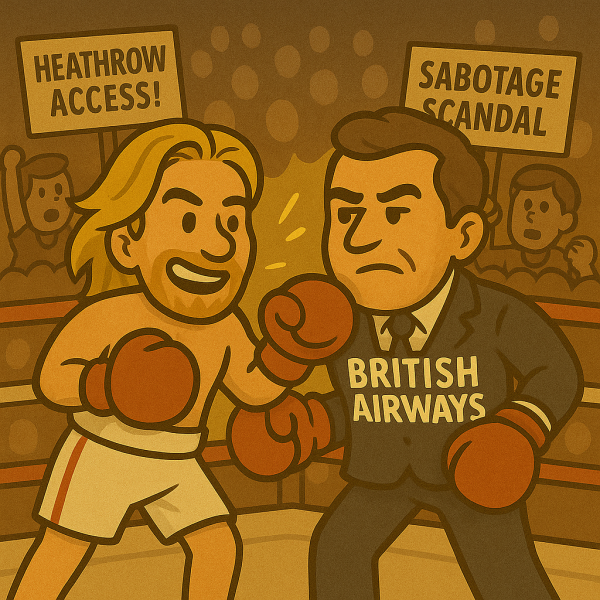
In this part, we’re jumping back a few years to explore some of the toughest battles Virgin Atlantic faced and how they were able to survive even with the odds stacked against them.
Challenging a Giant
Virgin’s biggest threat was British Airways (BA). Though recently privatized, BA still dominated UK air travel, having a monopoly-like position. They blocked competition from smaller airlines using political influence, lobbying, and even giving out free flights to government officials.
Branson explains that much of an airline’s success depends on their ability to land slots at major airports. This gives their airplanes permission to land at certain times, allowing them to expand to new routes. Early on, Virgin’s major challenge was getting landing slots at Heathrow, the UK’s busiest airport. Branson knew he needed access to grow, but BA worked hard to keep them out.
In 1987, BA bought British Caledonian. Branson feared it would strengthen their monopoly—but it actually opened a door. Two British airlines were allowed to fly key international routes to the U.S. and Japan, and Virgin was awarded the newly empty slot. It was a turning point.
War and Setbacks
In 1990, Iraq invaded Kuwait—delivering two major blows to Virgin:
- Fuel prices doubled, which was their single biggest expense.
- Terrorism fears caused a wave of canceled flights.
Branson responded to the war with diplomacy and aid. He’d previously befriended King Hussein and Queen Noor of Jordan, once even teaching them to fly a hot-air balloon. Through this connection, he used a Virgin plane to bring blankets, food, and medical supplies to 150,000 refugees in Jordan.
Later, he helped negotiate the release of British hostages held in Iraq. He sent a letter to Saddam Hussein in Iraq, through his connection to the King of Jordan. He offered to fly in medical aid in exchange for the hostages. Branson and a small crew flew a Virgin jet into Baghdad and returned with rescued civilians.
These high-profile missions made Virgin look bigger than it was. In truth, it was still a tiny airline with just four planes—and struggling to survive.
1991 was a dark time. Multiple independent European airlines had shut down. Virgin was £50 million in overdraft, and his bankers were getting nervous. Branson pointed out that Virgin Music was making £30 million profit per year and worth nearly £1 billion—a not-so-subtle hint that he could sell it if needed.
Dirty Tricks from British Airways
Meanwhile, BA stepped up its attacks.
Virgin staff reported BA agents approaching their customers at airports, trying to make them switch over. BA engineers had botched a repair on a Virgin plane, grounding it for two weeks during peak season. Branson was also fielding strange rumors—about drugs in Virgin nightclubs, or the airline shutting down.
Then a former BA employee, Peter Fleming, went public. He claimed BA had created a “dirty tricks” unit to sabotage Virgin’s reputation—shredding documents, spreading rumors, and accessing Virgin’s reservation data illegally.
Branson wrote an 8-page letter to BA’s board, reminding them of a recent £10 million payout they’d made to Laker Airways for similar behavior. He got no real response. A new TV documentary, Violating Virgin, about the rivalry between the two airlines, was seen by 7 million people.
But none of it seemed to hurt BA. In fact, the bad press just made Virgin look more unstable. And that made banks hesitate to loan more money. Customers pulled back. At one point, Branson’s team almost couldn’t make payroll—they were within £100,000 of their £55 million limit.
Taking Them to Court
BA finally crossed the line when they published an article calling Branson’s claims “completely unfounded.” Basically calling him a liar in public. Branson had never sued anyone before—but this time, he did.
In preparing for the trial, more proof emerged:
- A former BA insider confirmed they had a team specifically targeting Virgin customers.
- Another whistleblower handed over a computer disk proving BA had a covert operation, code-named “Covent Garden,” spending £15,000 a week on private investigators.
BA settled. They issued a public apology and paid £600,000 in damages, which Branson split among Virgin Atlantic staff.
He’d cleared his name—and shown Virgin could take on giants and win.
- Virgin Airways battled for access to Heathrow Airport, while British Airways used dirty tricks to block them and damage Branson’s public image. Eventually, BA’s secret sabotage unit was exposed, leading to a legal victory and public apology.
- The Iraq War nearly collapsed the airline, but Branson used diplomacy and aid missions to build goodwill during that difficult time.
💰 8. Reset to Survive: Branson made the toughest call of his career—selling Virgin Music to save everything else.
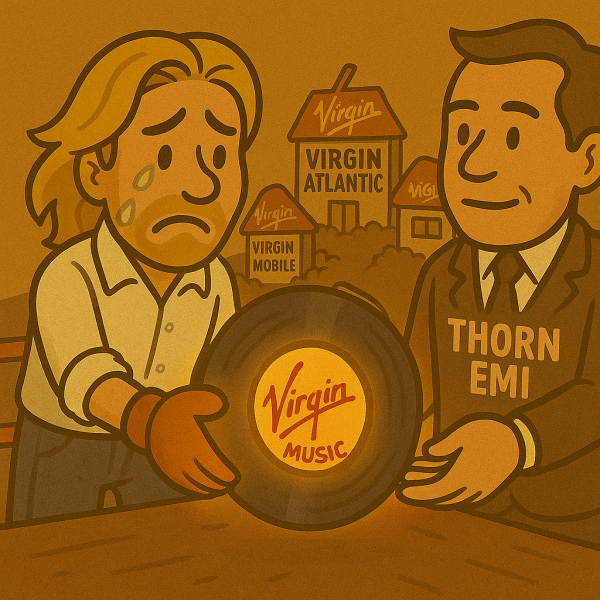
Let’s jump back again a few years to focus on Virgin Music.
Going Public, Then Regretting It
By 1986, Virgin Music was one of the UK’s biggest companies, with 4,000 employees and £189 million in sales. But as a private company, access to capital was limited. To fuel growth, Branson took it public.
The IPO was a huge success—over 100,000 people applied to invest. Long lines formed outside city offices to buy Virgin shares.
But Branson soon regretted it. As a public company, Virgin was bogged down by formal procedures, rigid schedules, and board meetings. Worse, British investors expected regular dividends, while Branson believed in reinvesting profits to grow. He felt like he’d lost control.
The Crash and the Buyback
In 1987, the stock market crashed. Virgin’s share price fell from 160 to 90, and Branson lost £40 million on paper—even though profits had doubled. They had been planning to acquire Thorn EMI (which owned The Beatles’ catalog), but that had to be scrapped.
The volatility convinced Branson to take Virgin private again. He bought back all shares at the original price, but had to borrow £300 million, with £200 million due within a year—leaving Virgin deep in debt.
Selling What He Could
To repay the banks, Branson began selling off parts of Virgin:
- Virgin’s last remaining small record shops were sold to WH Smith. Branson said they struggled because customers disliked the limited selection.
- Virgin had shifted focus to massive megastores in cities like London, Paris and Tokyo. These stores were thriving, and Branson sold 50% of them to WH Smith for £12 million.
- The European rights to distribute Sega games—a surprisingly profitable side venture—were sold back to Sega for £33 million. It was perfect timing, just before the gaming market crashed.
- 10% of Virgin Atlantic was sold to a Japanese company for £36 million.
Most importantly, 25% of Virgin Music was sold to Fujisankei for £100 million, valuing the label at over £400 million.
And Virgin Music kept growing. They signed Janet Jackson, then the world’s top female artist, in a £25 million deal—a strategic bet Branson believed would boost the brand’s image worldwide.
The Impossible Decision
By 1991, Virgin Atlantic was drowning in debt, and media reports kept predicting bankruptcy. That made it nearly impossible to borrow more—because in big business, perception is everything. Without public confidence, the bankers didn’t feel secure lending him any more money.
Branson faced the hardest choice of his life: keep Virgin Music, the company he loved most—or sell it to save everything else. Selling would clear his debts, protect the Virgin brand, and fund future growth.
In 1992, he made the call: Virgin Music was sold to Thorn EMI for £560 million (about $1 billion USD).
When he told his team, he couldn’t hold back the emotion. Branson ran out in tears—letting go felt like losing a loved one.
- Branson went public to grow—but quickly regretted the loss of control. After the 1987 crash, he took Virgin private again, piling on debt.
- To save the brand, he sold smaller assets and ultimately sold Virgin Music for $1 billion—his most treasured company. It was his hardest decision, but it kept Virgin alive and ready to grow again.
Elon Musk is another entrepreneur who came dangerously close to total failure. After making $250 million from the sale of PayPal, he followed his dream of building a private space company. He thought it would take 18 months—but six years, three failed rockets, and over $100 million later, SpaceX was nearly out of money and time.
Then came the fourth launch. From a remote island near Hawaii, a small, scrappy team pulled off what had once taken entire nations: they reached orbit. That success led to a game-changing NASA contract and marked the true beginning of private spaceflight.
🌱 9. Diversify to Grow: After selling Virgin Music, Branson reinvested in bold new ventures—expanding Virgin into everything from mobile phones to space.
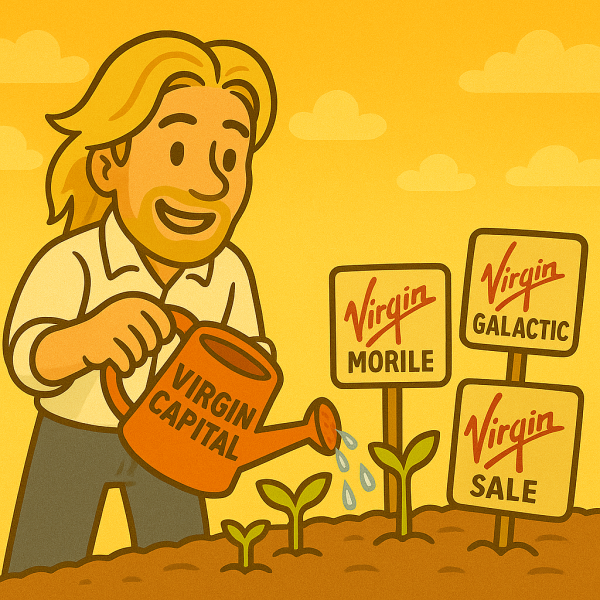
Selling Virgin Music gave Branson a massive cash boost—and freed him to explore exciting new directions, following his naturally curious nature. All while maintaining Virgin’s core brand of being informal and fun.
Ironically, once he’d cleared his debts and had more money than he knew what to do with, banks that once hesitated were now eager to lend him more than ever.
Early Wins: Cola and Finance
First came Virgin Cola. Despite competing with giants like Coca-Cola, they still captured 50% of the UK market within months, thanks to a smart partnership with Cott Corporation, who bottle many different types of drinks.
Next came Virgin Money—offering life insurance, mortgages, and investments. While it didn’t seem like a typical Virgin brand, Branson believed they could disrupt finance by offering better deals. They launched quickly with a 50/50 partnership with Norwich Union, and within three years, had 250,000+ customers.
These early successes reflected Branson’s core business principles:
- Get the best team in place.
- Use 50/50 partnerships to keep everyone invested.
- Give leaders a personal stake/incentive in the new business’s success.
Expanding Fast
Branson kept going:
- Virgin Mobile became a major phone provider, with 4 million UK customers by 2004, valued at over £1 billion. They expanded to the US and Canada with the same model.
- Virgin Cars sold cars online and by phone—cutting dealership costs.
- Virgin Active health clubs launched, especially in South Africa.
Then came Virgin Galactic. Branson was inspired by the first private spaceship launch from Burt Rutan, whom he sponsored to build the Virgin Atlantic GlobalFlyer—which circled the globe non-stop in under 80 hours.
This evolved into Virgin Galactic, a private space tourism company. Branson believed these innovations made for space travel—like ultralight materials and fuel-efficient design—could also transform air travel on Earth.
Back on Track—Literally
Branson also launched Virgin Trains. From the start, they prioritized safety beyond government standards. That choice paid off in 2007, when a Virgin train derailed at high speed in northwest England.
Branson immediately flew to the scene. Miraculously, only one person died and most injuries were minor. An investigation found track failure—not Virgin—was to blame. The strong safety design likely saved lives.
- Selling Virgin Music gave Branson the freedom to launch bold new ventures. Early wins like Virgin Cola and Virgin Money illustrate his business principles: rely on great teams, set up 50/50 partnerships, and give leaders incentives.
- He expanded into mobile, cars, fitness, trains, and even space travel—always aiming to do things better than the industry standard and bring in the Virgin brand of fun.
🕊️ 10. Shift Toward Contribution: Later in life, Branson focused less on risk—and more on making a meaningful difference.
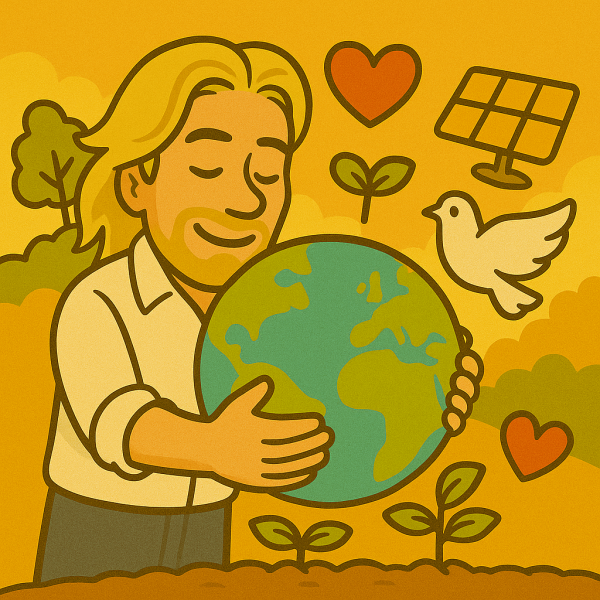
One Last Adventure
In 1998, Branson attempted one final balloon flight: a round-the-world journey. But this time, the biggest obstacles weren’t physical—they were political.
As the balloon drifted off course, countries like Libya, China, and North Korea revoked flyover permission midair. Branson had to negotiate with governments from thousands of feet above ground. At one point, they flew through a narrow corridor between Russia and Iran, risking being shot down.
They crossed the Pacific smoothly—until bad weather forced a crash-landing near Hawaii, ending the mission.
A New Focus
Back home on Necker Island for Christmas, Branson reflected. Surrounded by family, he decided: no more life-threatening stunts. He realized he could make a bigger difference using his wealth, brand, and influence.
He also cherished time with his family:
- Holly was becoming a doctor.
- Sam had a free-spirited, energizing outlook.
- He took his aging father camping in the Serengeti for one last grand adventure.
Branson also began thinking more seriously about the future of the planet.
Environment and Innovation
After conversations with Al Gore and Ted Turner, he became more vocal about global warming. He began investing in biofuel technologies to reduce reliance on fossil fuels. In 2007, he offered a $25 million prize for any innovation that could remove carbon from the atmosphere.
He built a wildlife reserve in South Africa called Ulusaba to help protect the wildlife. He also purchased Moskito Island, aiming to build it as a model of sustainability, working with top experts from Harvard and Berkeley.
Critics said he should stop flying entirely, but Branson argued it’s better for Virgin to lead the industry toward greener solutions than leave it to companies that don’t care.
Social Impact and Global Unity
Branson launched Virgin Unite, a nonprofit focused on global health issues like HIV/AIDS and women’s care in Africa. He partnered with leaders like Nelson Mandela and celebrities like Brad Pitt to fund and spotlight these causes.
One of his proudest efforts was helping launch The Elders—a council of respected global figures to serve as a voice of moral authority for the world. The group first met on Necker Island in 2006, with members including Mandela, Desmond Tutu, and Jimmy Carter.
Richard Branson ends his book with a long quote from Mandela, who explains the world needs a group of elders who are not politicians, who will speak the truth—even when it’s unpopular.
- Branson retired from high-risk stunts to focus on creating lasting impact. He turned his attention to climate innovation, sustainability, and social causes.
- Through Virgin Unite and The Elders, he uses his platform to inspire global change beyond business.
- Challenge yourself: Pick one task you’ve been avoiding and do it today.
- Make bold asks: Message 3 people today with a confident request—pitch, invite, or opportunity.
- Pivot fast: List one thing that’s not working—then write one way to change it.
- Define your brand: In one sentence, write what makes your work different.
- Bet on growth: List one bold move you can make this week—even if things feel shaky.
- Say yes to risk: Commit to one idea you’ve been sitting on—launch, post, or offer it now.
- Build your proof: Create a folder with screenshots of wins, praise, and past success.
- Protect the vision: Write down what you’d cut today to save your bigger goals.
- Expand your value: List 3 new products, services, or offers you could add next.
- Pick a cause: Choose one issue you care about—and donate time, money, or attention to it this week.
What did Branson’s mom once challenge him to do as a kid?
Swim across a lake
Bike 50 miles alone
Camp overnight in the woods
Sell newspapers door-to-door
What sales trick did Branson use when selling ads for his first magazine?
Offered a discount bundle
Quoted fake ad rates
Claimed their rival was already advertising
Promised bonus ad slots
What crisis forced Branson to pivot from mail-order to physical stores?
A recession wiped out sales
A warehouse caught fire
A legal ban on imports
A postal strike hit the UK
What made Virgin’s music identity stand out early on?
They sold what they liked
Flashy celebrity endorsements
Big discount pricing
Weekly live concerts
Why did Branson sell Virgin Music?
He was bored with music
He wanted to go public
To pay off airline debt
EMI gave him equity

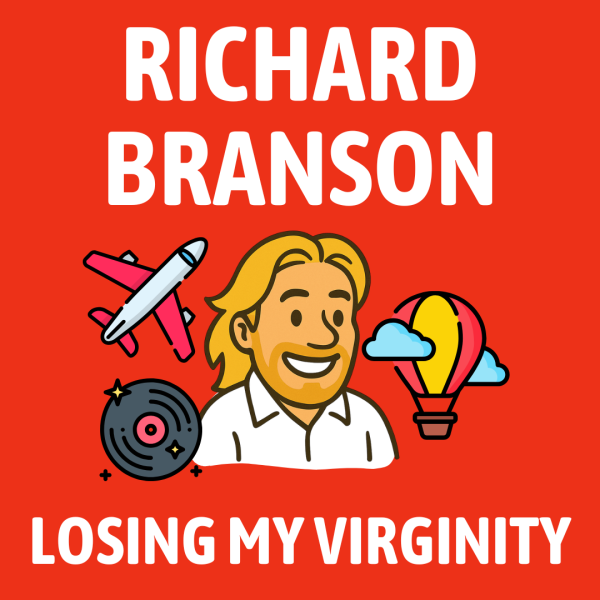
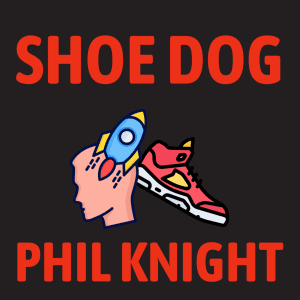
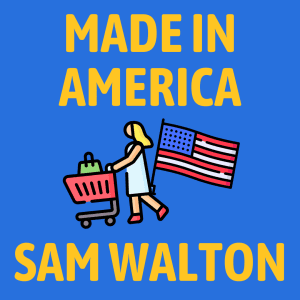
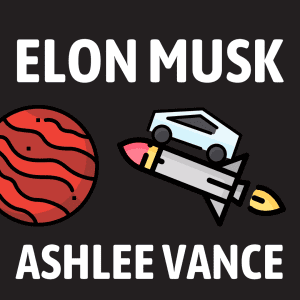
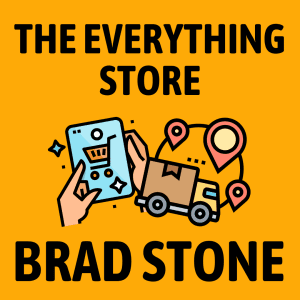
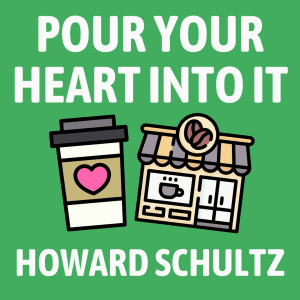

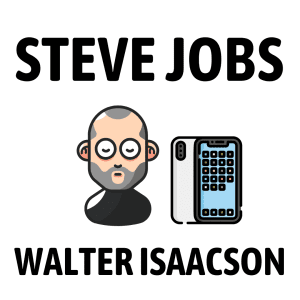
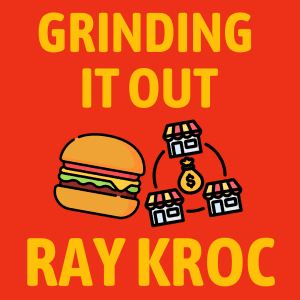
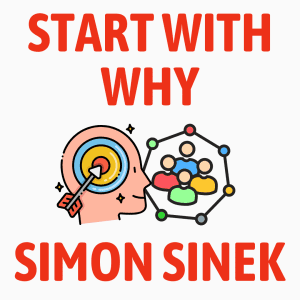
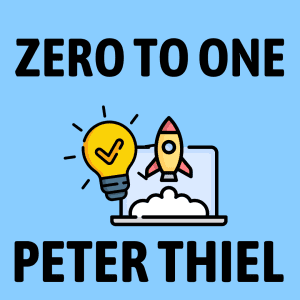
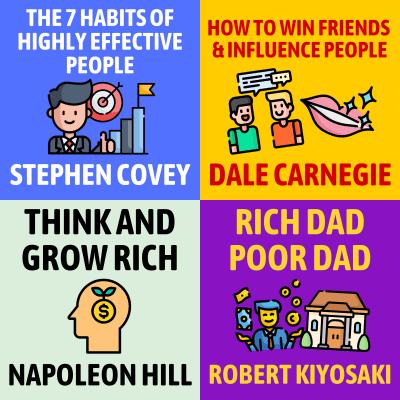
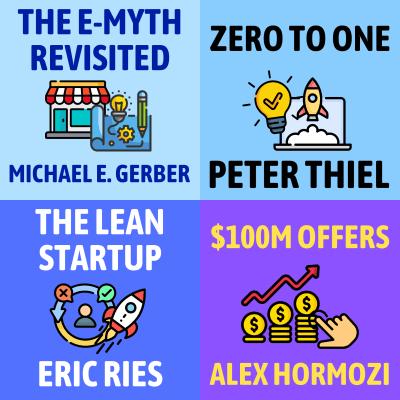
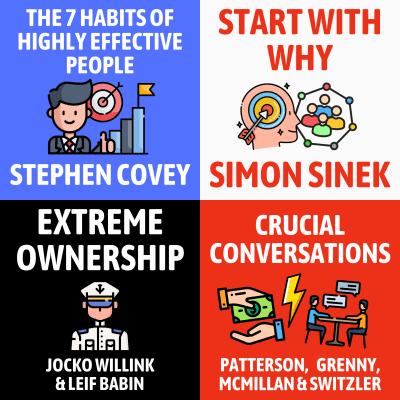
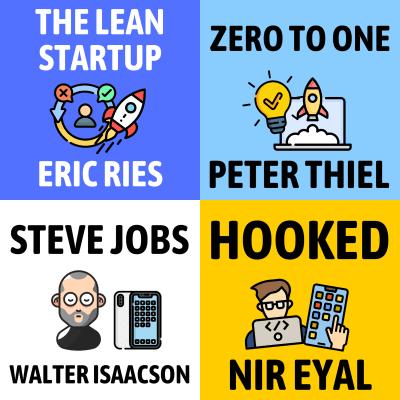
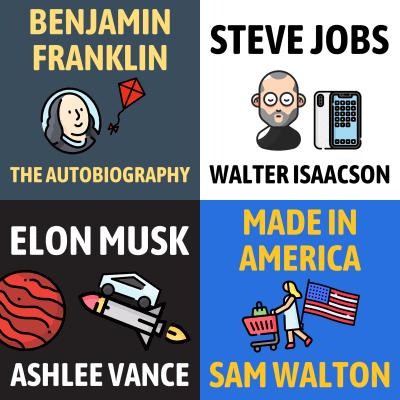
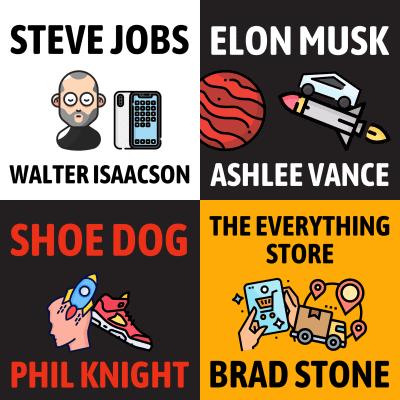
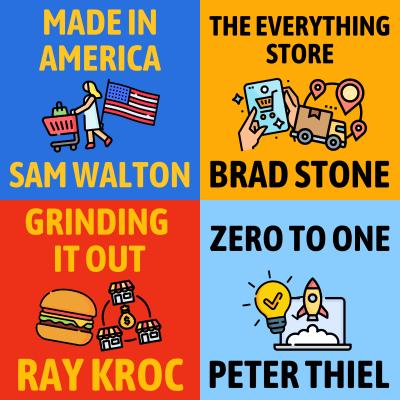
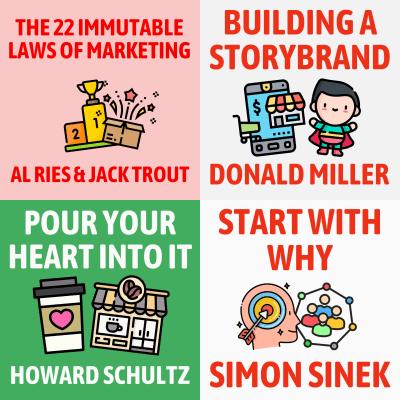

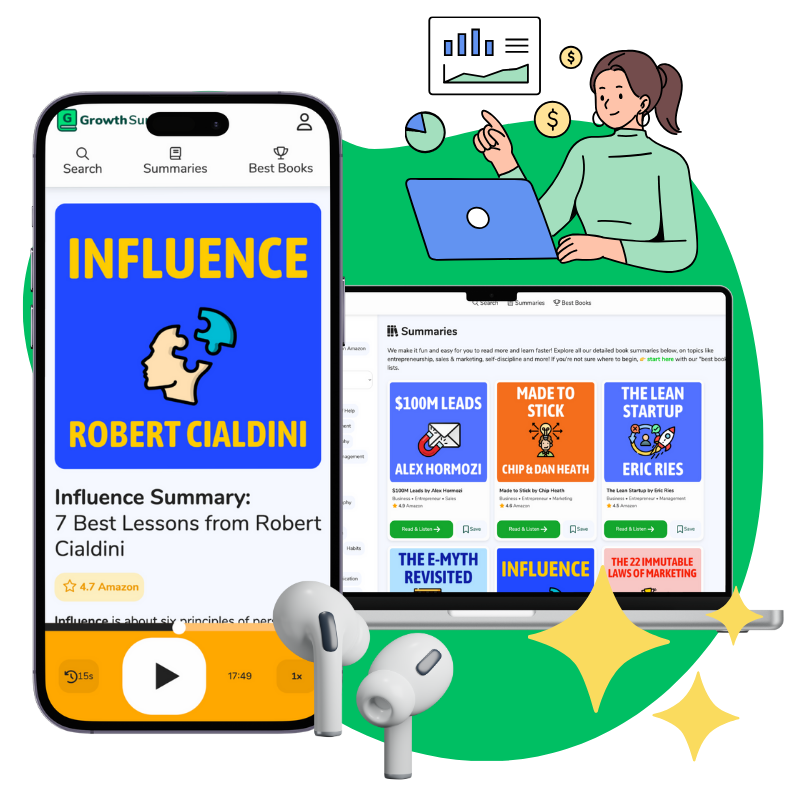
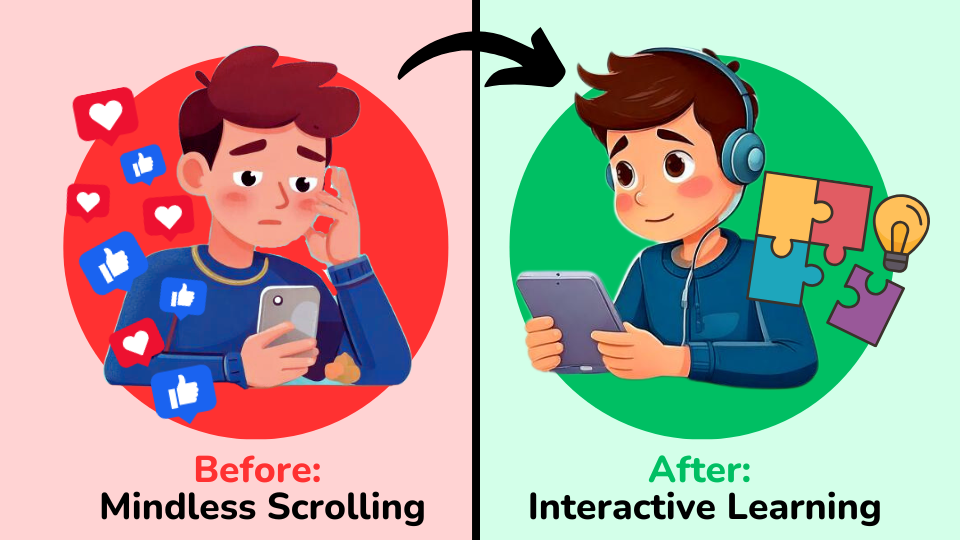








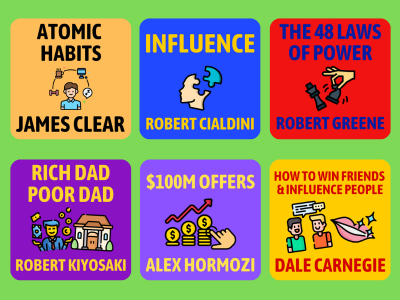
Community Notes